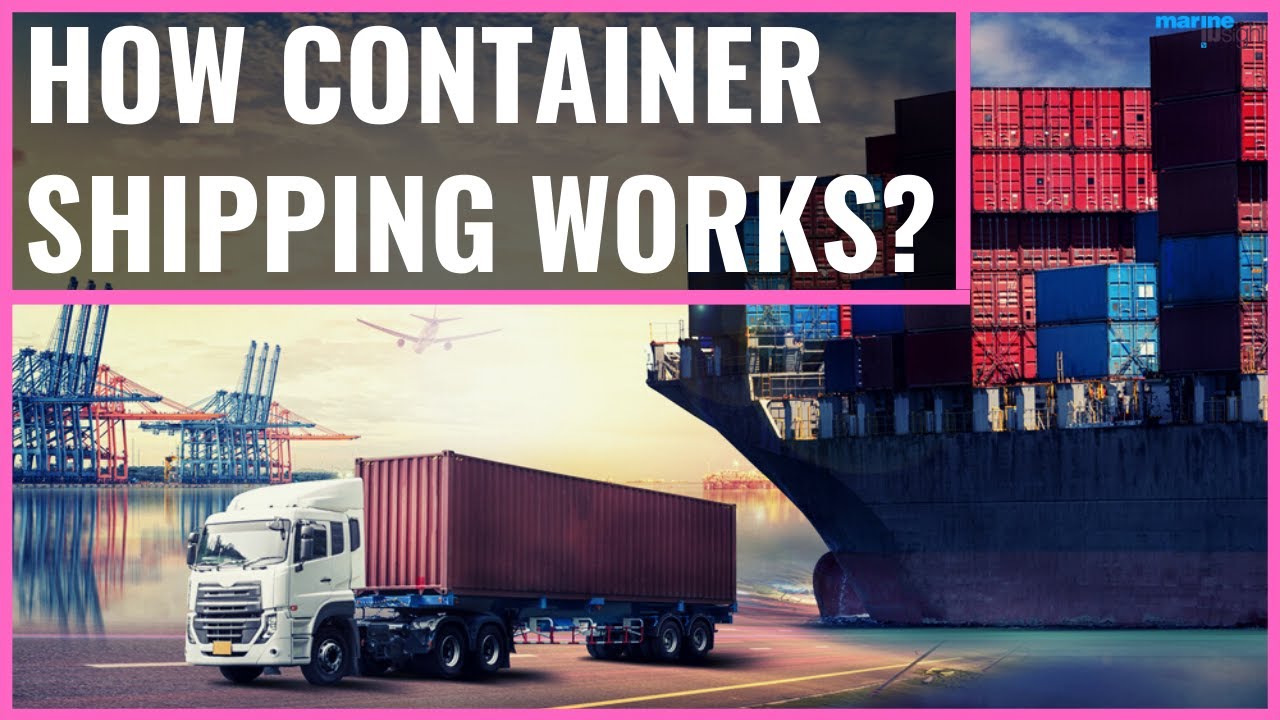How India Built Its Largest Port
Summary
TLDRThe script delves into the history and evolution of Mumbai's JNPT, India's largest container port, from its inception in 1989 to becoming a global trade hub. It highlights the port's growth, the challenges faced, and its strategic importance during wars. The summary also touches on the impact of containerization, the port's current operations, and future expansion plans, emphasizing JNPT's role in boosting India's foreign trade and its connection to over 200 ports worldwide.
Takeaways
- 🌐 JNPT, Mumbai's Jwal Nal Nehru Port Trust, is India's largest container port, handling 60 lakh containers and 78 million tonnes of cargo annually.
- 🏗️ Established in 1989, JNPT was built to alleviate the load on Mumbai Port Trust and is also known as Nava Shiva Port.
- 📚 The history of Mumbai dates back to the early 1500s with Portuguese settlement and the gradual development of trade and infrastructure.
- 🔄 Before becoming a major port, Mumbai was a collection of seven islands, which were connected over the years, starting from 1684.
- 🚂 The Great Indian Peninsula Railway Company built India's first railway line in 1853, connecting Bombay and Thane, to facilitate trade.
- 🏭 The port of Bombay saw significant growth and became a business hub, especially during the World Wars, when it was crucial for war strategy.
- 💥 A major explosion in 1944 at Victoria Dock caused extensive damage and loss of life, highlighting the need for improved safety measures at ports.
- 🚢 Post-independence, Mumbai Port Trust saw expansions and modernizations, including the Marine Oil Terminal and containerization facilities.
- 📈 JNPT's establishment was a response to the increasing cargo and containerization needs, and it has since become a leading port with global connectivity.
- 🌍 JNPT is ranked 28th among the world's top 100 container ports and handles 52% of India's containerized cargo volume.
- 🛳️ The port is continuously expanding, with plans for Terminal 4 and satellite ports to further increase trade and efficiency.
Q & A
What is the name of India's largest container port and where is it located?
-India's largest container port is the Jwal Nal Nehru Port Trust, located in Mumbai.
How many containers and cargo does JNPT handle annually?
-JNPT handles 60 lakh containers and moves 78 million tonnes of cargo every year.
What is the alternate name of JNPT?
-JNPT is also known as Nava Shiva Port.
When was JNPT established and why was it built?
-JNPT was established in 1989 to reduce the burden on Mumbai Port Trust.
What significant event in 1661 led to the British Empire gaining control over some of the islands previously under Portuguese control?
-The marriage of Queen Catherine of Braganza of Portugal to Charles II of England led to the British Empire gaining control over some islands as part of the marriage treaty.
What was the purpose of the Great Indian Peninsula Railway Company building the country's first railway line between Bombay and Thane?
-The railway line was built in view of the commerce in 1853 to facilitate trade and transportation.
How did the port of Bombay contribute during the World Wars?
-During the World Wars, the port of Bombay was used for repairing and refueling ships, and for transporting weapons, ammunition, and other essential supplies, playing a crucial role in war strategy.
What major incident occurred in the port in 1944 that caused significant damage and loss of life?
-A huge explosion took place in the warship SS Fort Stikine on 14th April 1944 due to an accident while unloading explosives, causing massive damage and killing over 800 people.
What is the significance of the year 1980 for Mumbai Port in terms of containerization?
-In 1980, Mumbai Port updated its port facility to handle container traffic, which included the installation of handling equipment and the construction of container freight stations.
What percentage of the country's containerized cargo volume does JNPT handle?
-JNPT handles 52% of the country's containerized cargo volume.
What is the current ranking of JNPT among the world's top container ports?
-JNPT is ranked 28th among the top 100 container ports in the world.
What is the projected expansion for JNPT by March 2026?
-Phase II of Terminal 4 is expected to start by March 2026, which will increase the port's capacity to handle more cargo annually.
How has containerization impacted the efficiency of cargo transportation?
-Containerization has revolutionized cargo transportation by saving time and reducing costs, allowing goods to be packed once and transported through different modes without the need for repeated unpacking and repacking.
Outlines

Этот раздел доступен только подписчикам платных тарифов. Пожалуйста, перейдите на платный тариф для доступа.
Перейти на платный тарифMindmap

Этот раздел доступен только подписчикам платных тарифов. Пожалуйста, перейдите на платный тариф для доступа.
Перейти на платный тарифKeywords

Этот раздел доступен только подписчикам платных тарифов. Пожалуйста, перейдите на платный тариф для доступа.
Перейти на платный тарифHighlights

Этот раздел доступен только подписчикам платных тарифов. Пожалуйста, перейдите на платный тариф для доступа.
Перейти на платный тарифTranscripts

Этот раздел доступен только подписчикам платных тарифов. Пожалуйста, перейдите на платный тариф для доступа.
Перейти на платный тарифПосмотреть больше похожих видео

World of the Fatimids and Short Films - AKDN in Cairo

How Container Shipping Works?

The 6 INTERESTING Fun Facts for Marıtıme

Best Port Business Stocks | India's Future in Port Business | Port Stocks in India@realscalpervipul

China's new mega-project: Shanghai Yangshan deep-water port 上海洋山深水港 part 2/5

How Asian Paints Built MONOPOLY in the Indian market? : Indian Monopolies EP 1
5.0 / 5 (0 votes)
